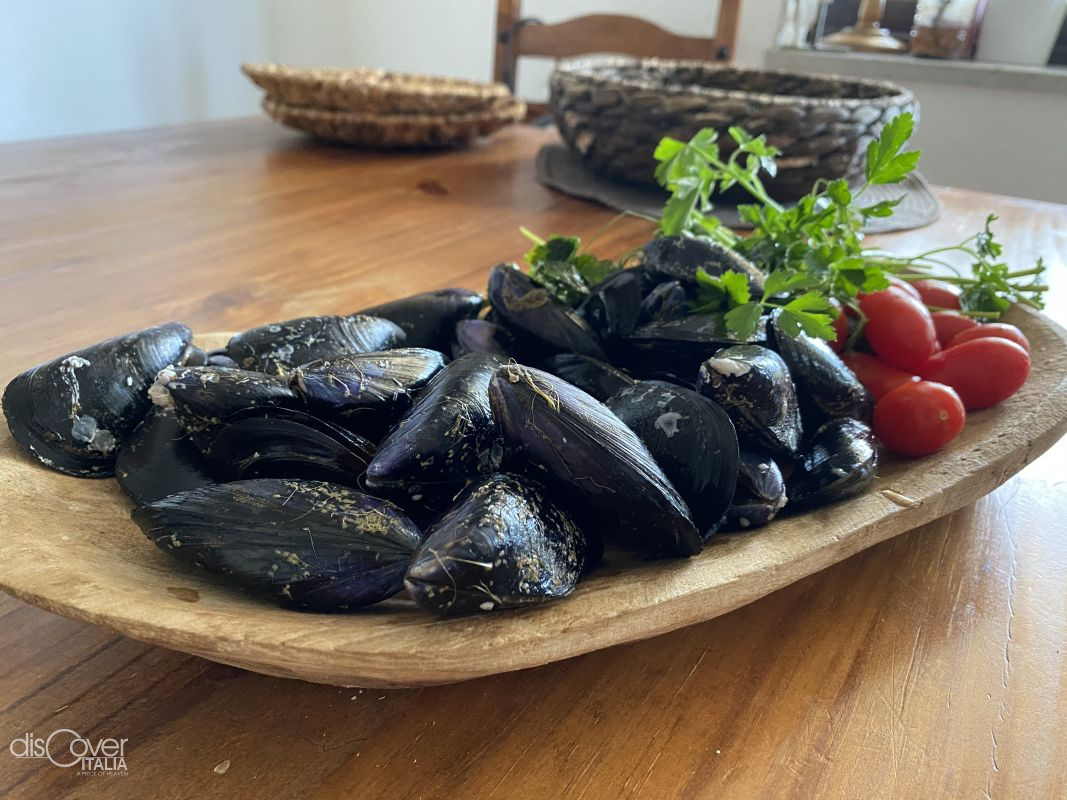At the table with the myth, fully integrated into the atmosphere of the Roman otium? The chefs of the Phlegraean Fields have been able to renew the splendors of the imperial gourmets

Mussels, clams, oysters, refined fishes and aromatic herbs, with ancient legumes such as lentils are still triumphing in the menu, prevalently a seafood one, which ends with an addition of tasty and crunchyannurche apples, originatng precisely from the Pozzuoli area. Where the herbs for the liqueurs and the fruits for the zero kilometer homemade jams come from. For the wine, there is a lot of choice. Going for wine cellars is in fact a fascinating experience, in the heart of the DOC Campi Flegrei, which is summerised in the essential history of two vine varieties, the Falanghina and the Piedirosso, grown in really special landscape contexts. Already the Roman intellectuals, from Cato to Columella, described with a great clarity the organoleptic peculiarities of the wines of the territory. An millennial identity, which companies are well able to express when signing today’s bottles. If we think about the Falanghina, which owes its name to the “falange”, which is the support pole around which the progressive development of the vine takes place: it is the characteristic of the phlegraean viticulture with the “spalatrone” breeding system.
Between the lakes and the sea, the cradle of the Phlegraean mussels
In the Phlegraean area, the history of the mussels, now certified by the relaying facilities, started when the presence of fumaroles and hot thermal waters which re-emerged a little bit everywhere, well-known in Roman times, enlightened the brilliant mind of Sergio Orata, in the lake of Lucrino, he created the first system for oysters cultivation. On the other hand, the effigy of the oysters was present in most of the Cumae coins. But the lakes were exploited in an intensive way. Then, after a long dark period, Ferdinand IV of Bourbon decided to relaunch the farms in the Fusaro: in a short time, they realised, however, tit was realised hat oysters and mussels were incompatible together. Therefore, the mussel farm was moved to Capo Miseno and the surrounding area: the local fishermen eat them raw with the soft part of the bread and a little freshly squeezed lemon juice squeezed. A classic. Recently, admittedly , in the Fusaro, a mussels production has been reorganised with good results. The growth process is carefully controlled in every step and it lasts from October, after the seeding, until May, when the mussels are ready to be sold and to end their journey in a very fragrant “impepata”, a fish soup, or combined with pasta.
THE RECIPE
Impepata di cozze (Peppered mussels)
Initially, the months without a “R” in the name, according to tradition, were those to be preferred to best enjoy the mussels. The “impepata” is very easy. Of course, you need to brush and clean the mussels properly and then, in a pan with some garlic cloves, once the oil is hot, you can add the seafood. Cover the pan with a lid and leave it for few minutes on high heat until the mussels have opened. When cooked, add some freshly ground pepper and some chopped parsley (if you like). Mix the sauce and the mussels agitate the pan and serve warm.




Comments powered by CComment